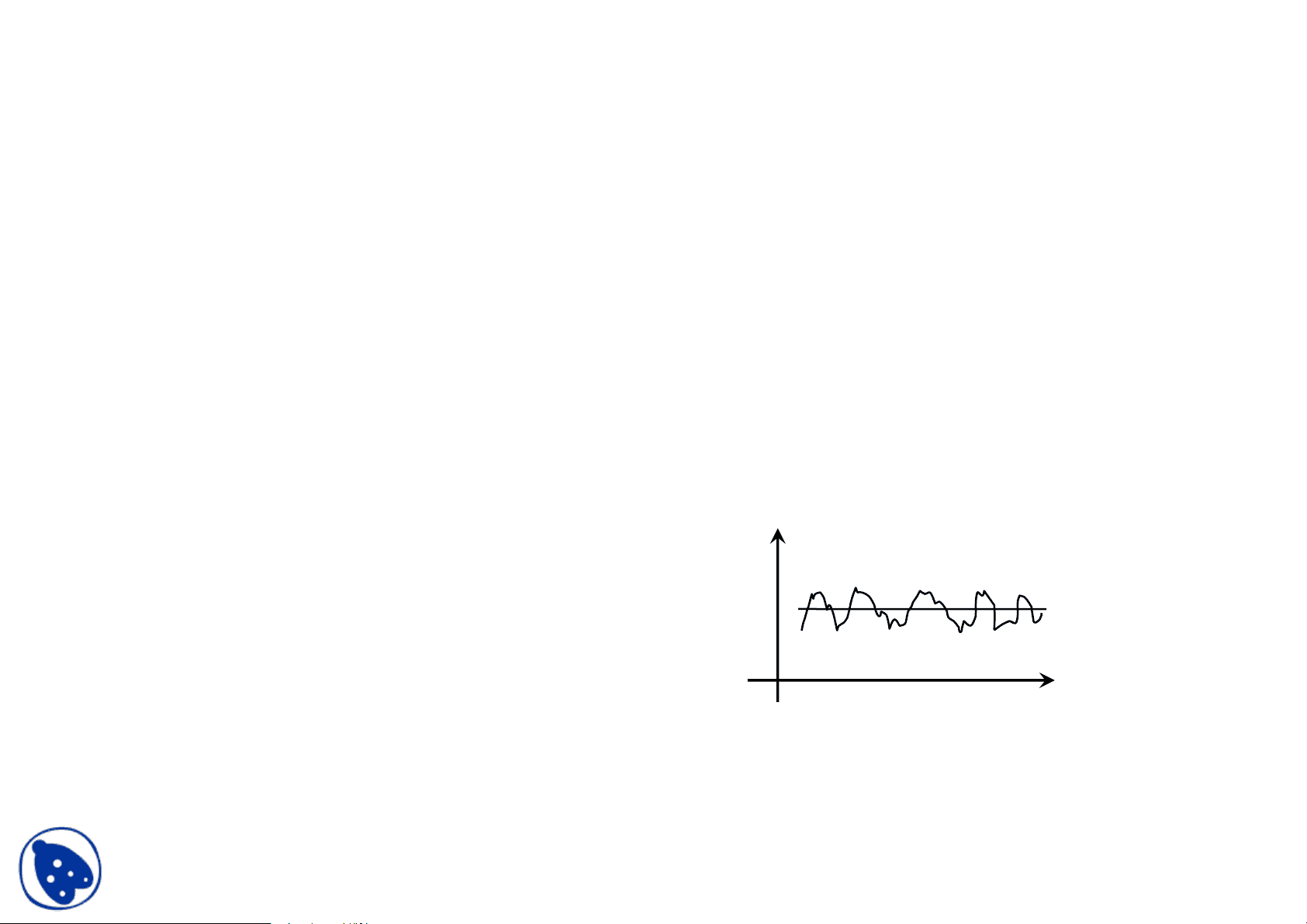
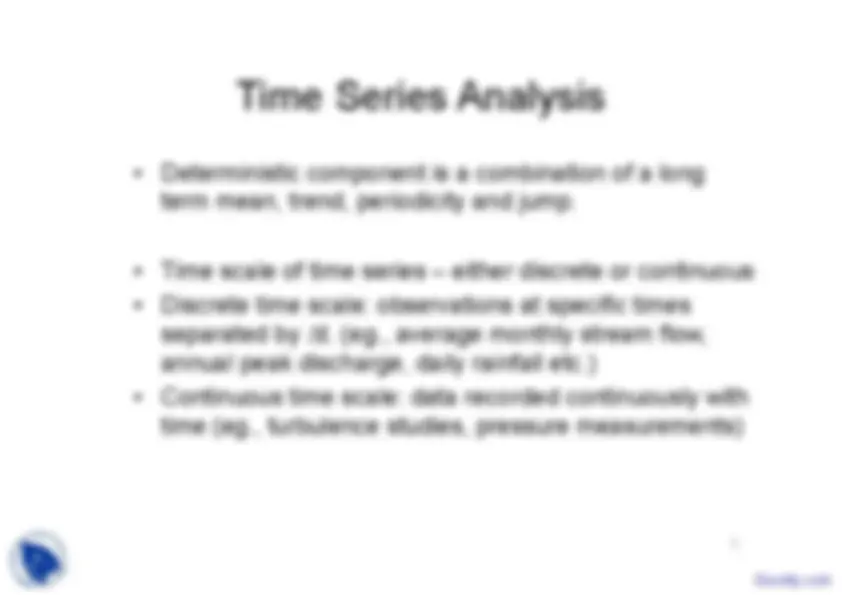
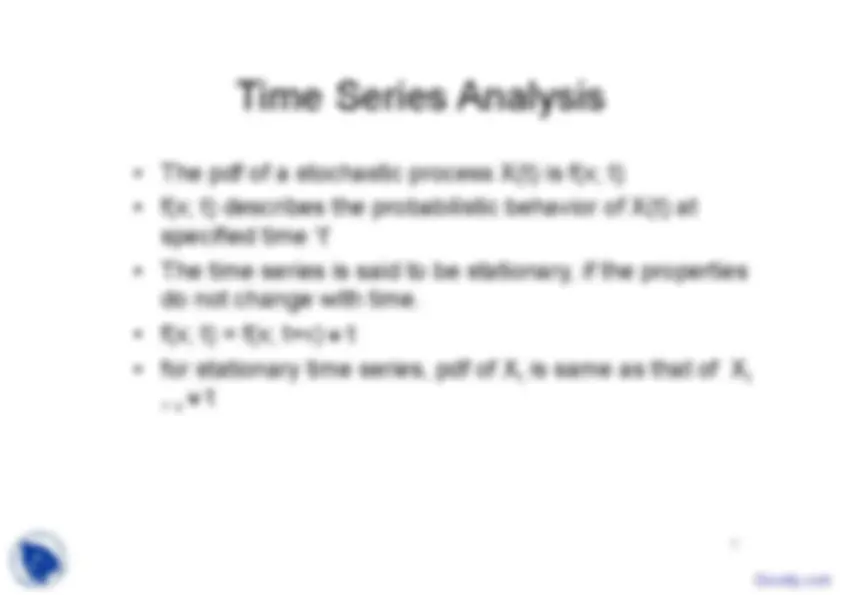
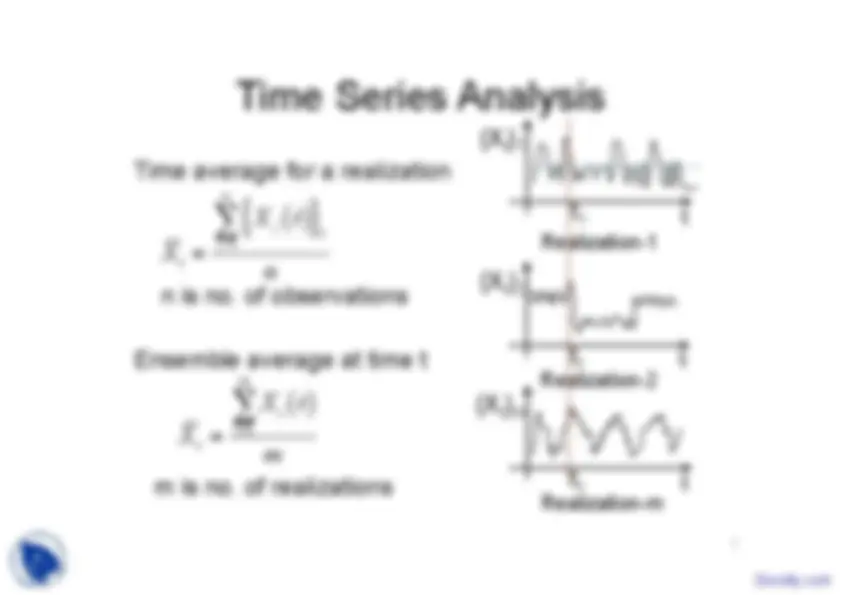
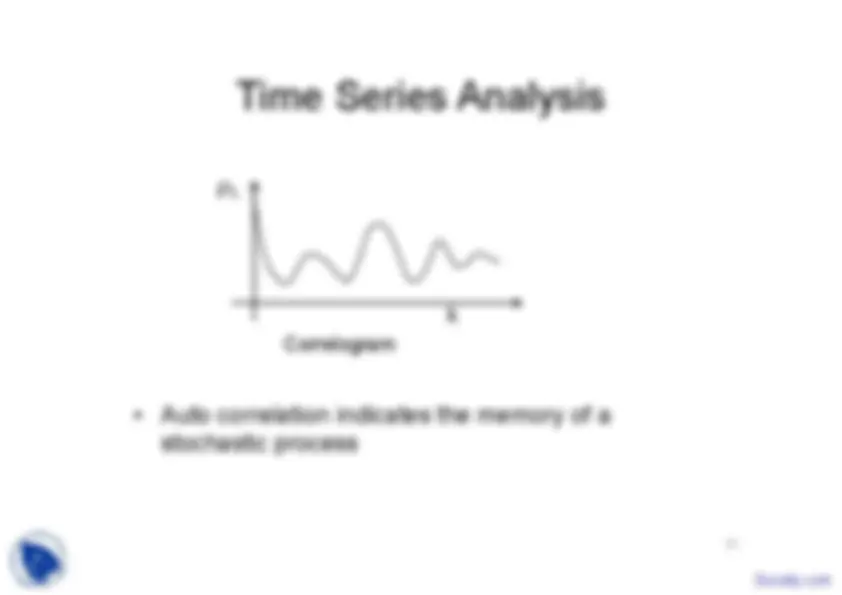
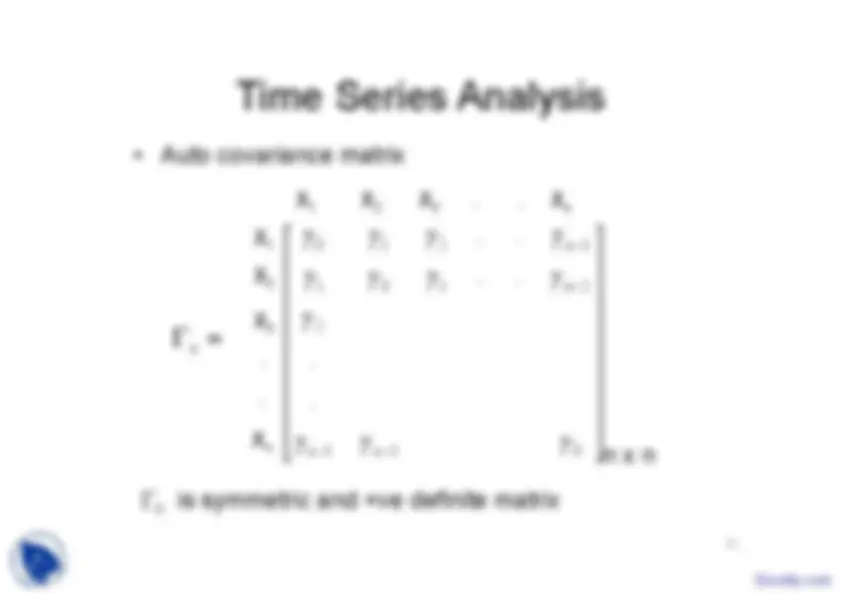
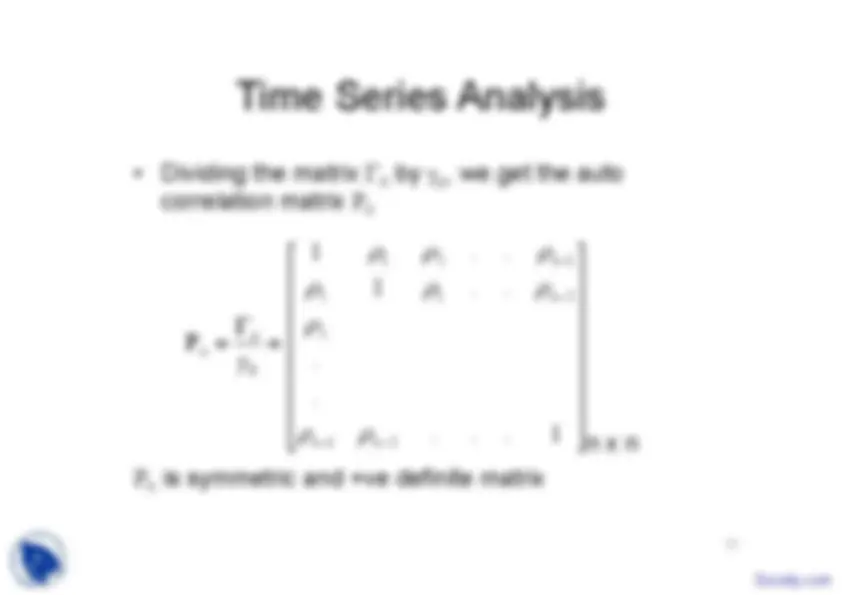
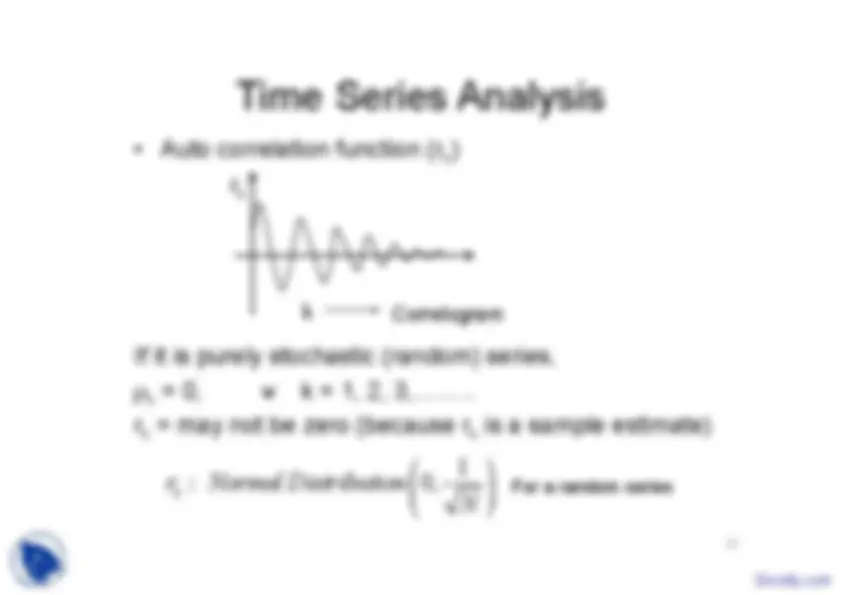
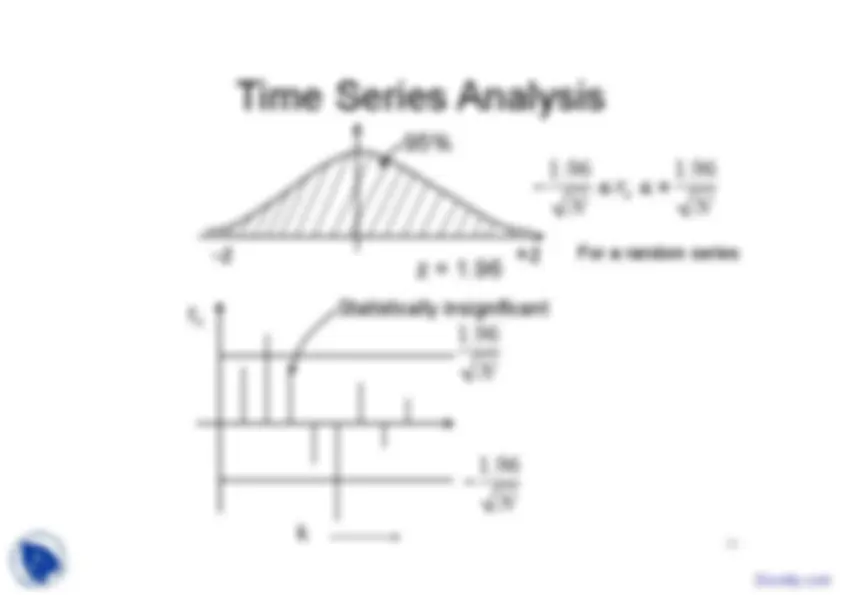
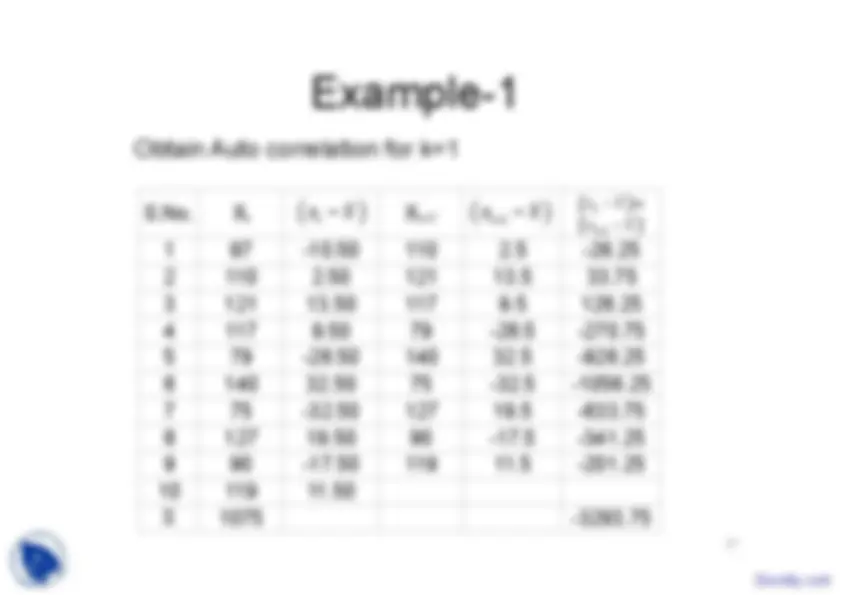
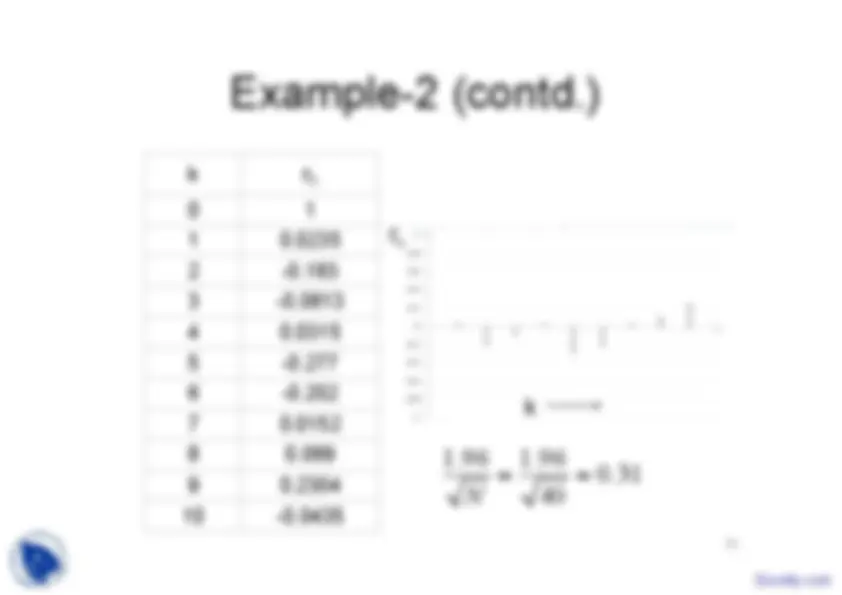
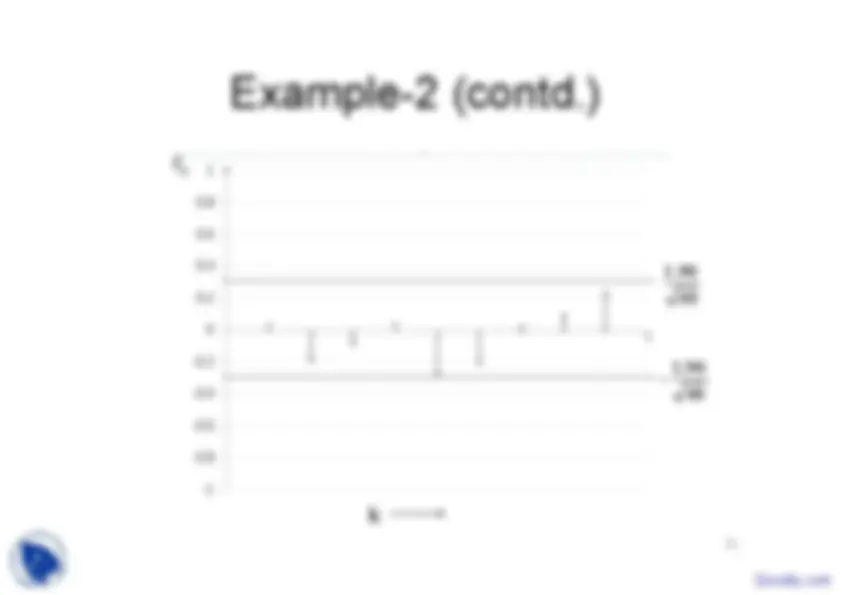
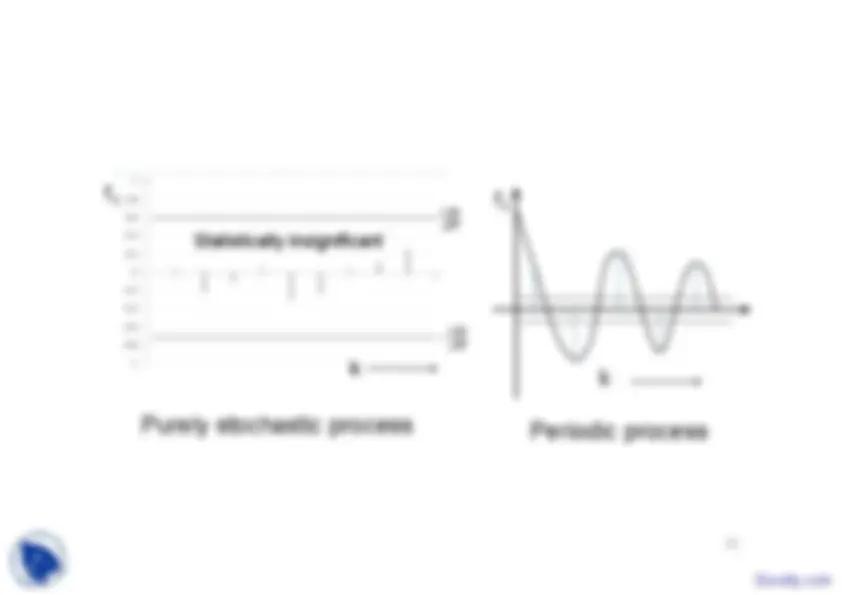

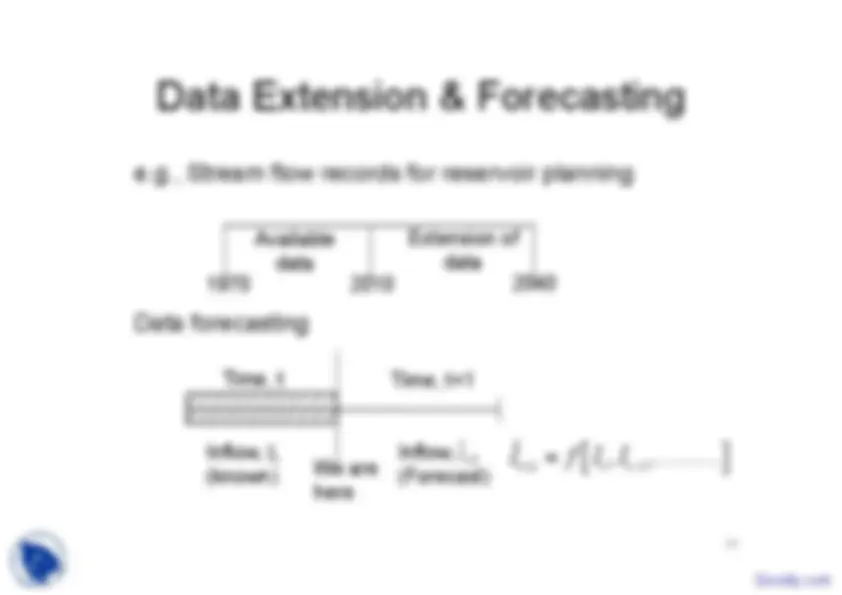
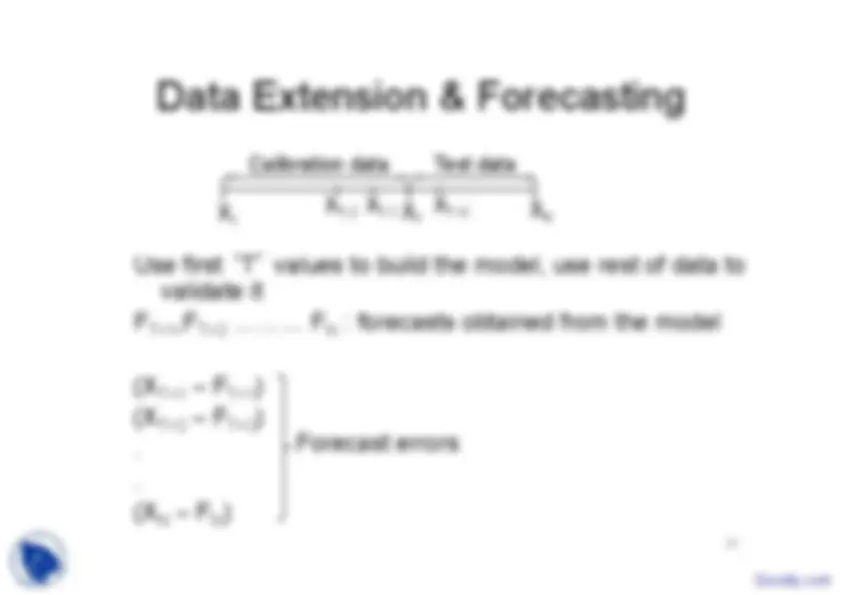
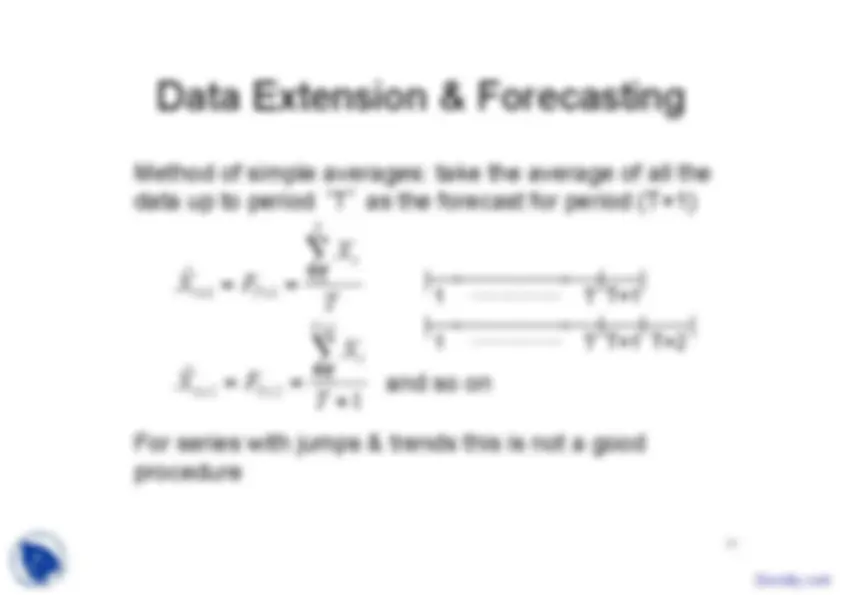
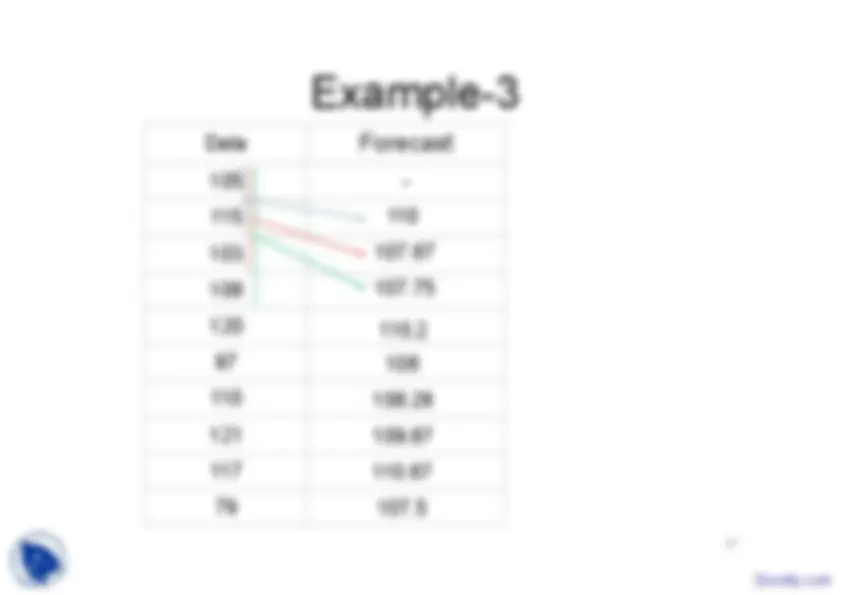
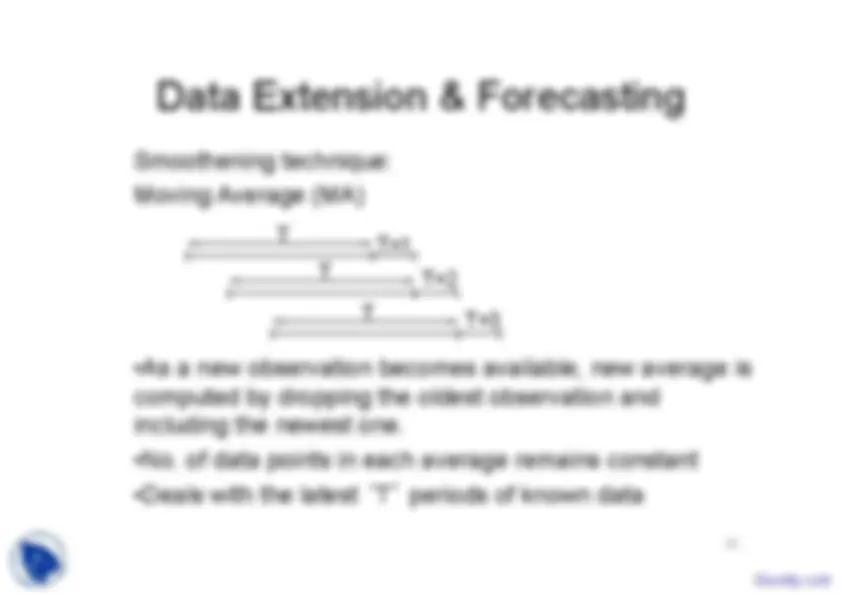
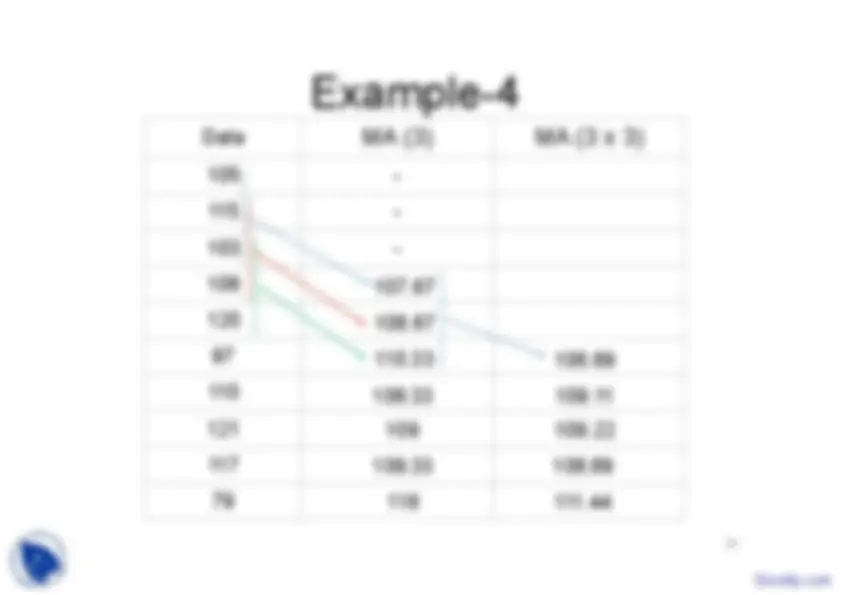
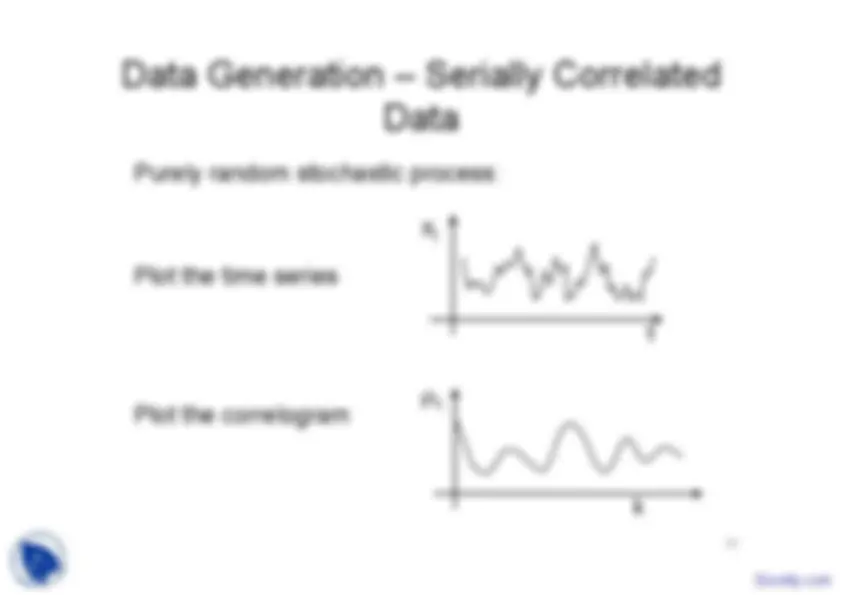
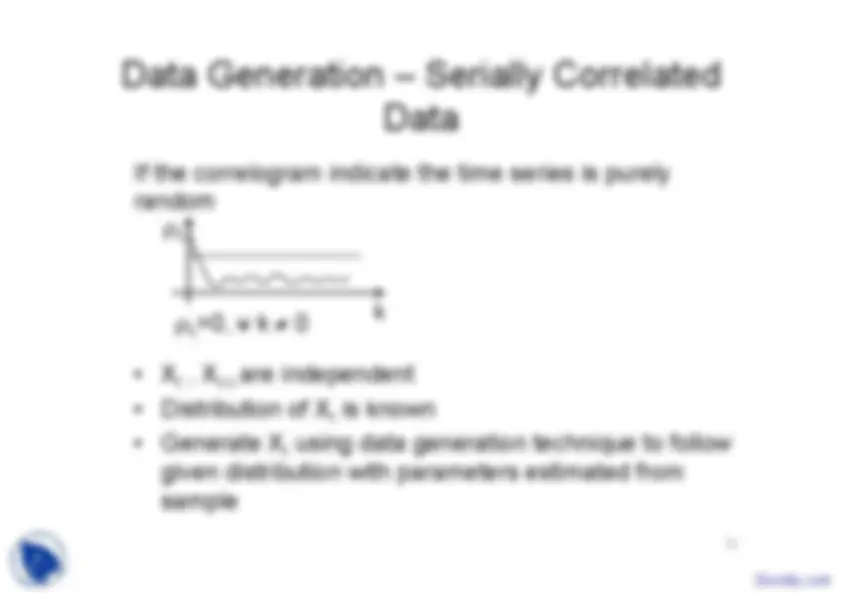
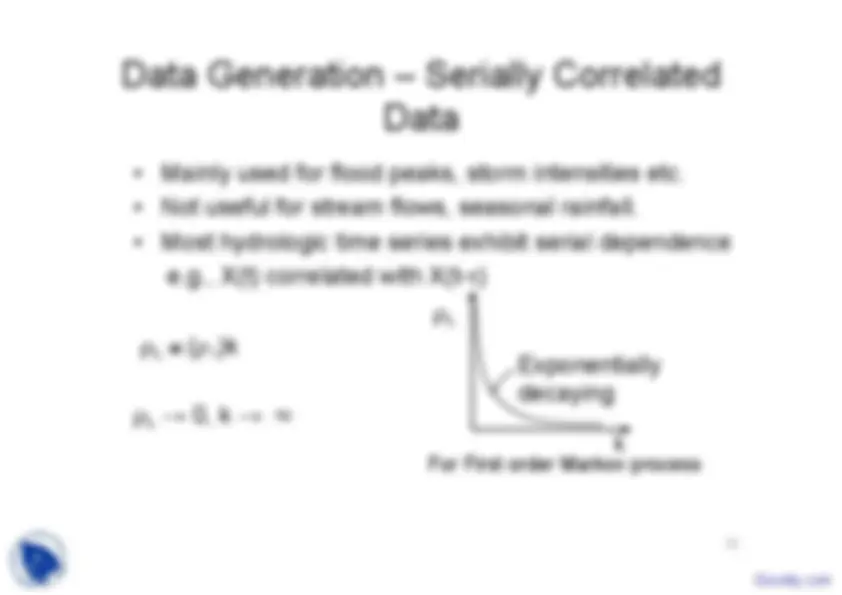
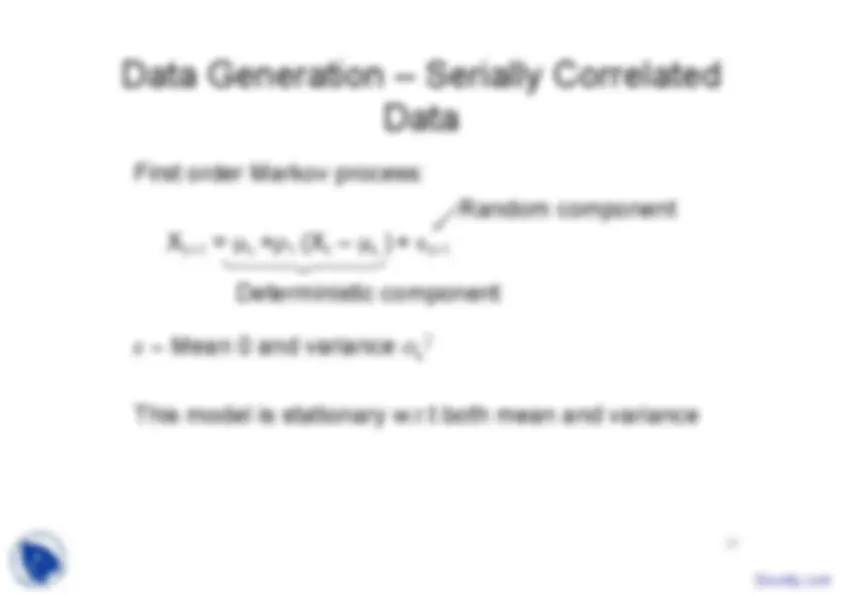
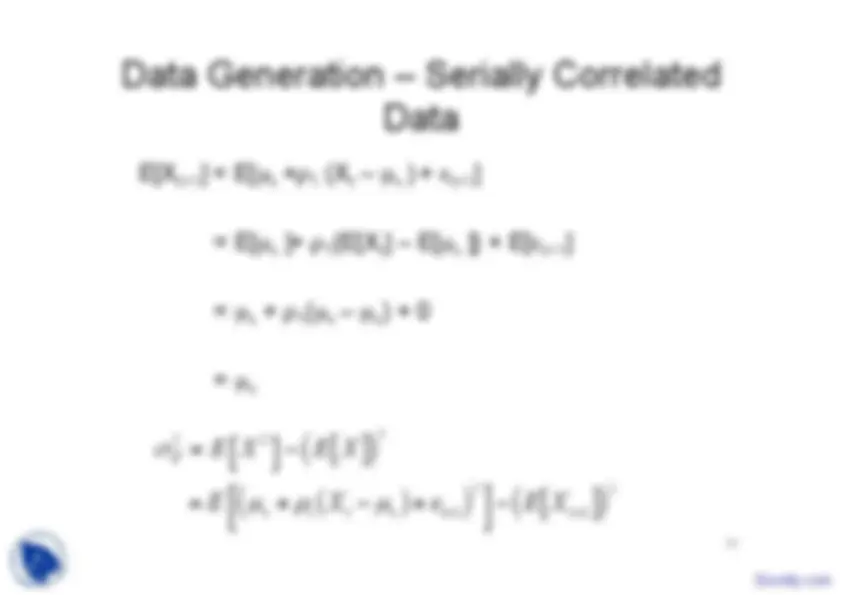
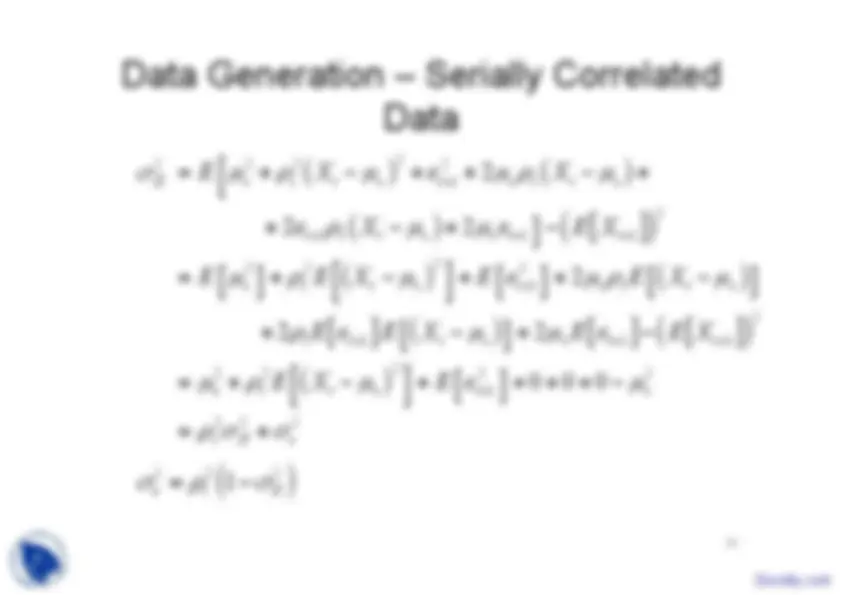
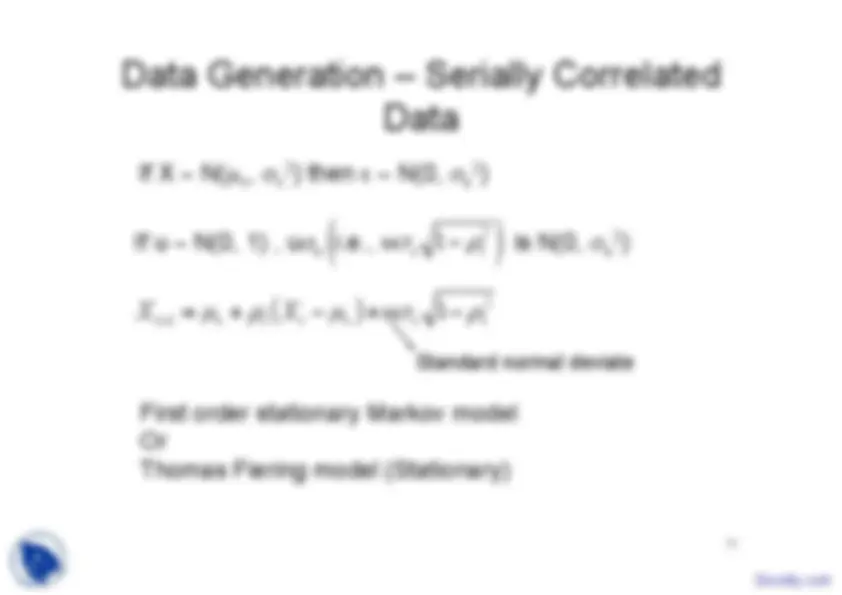
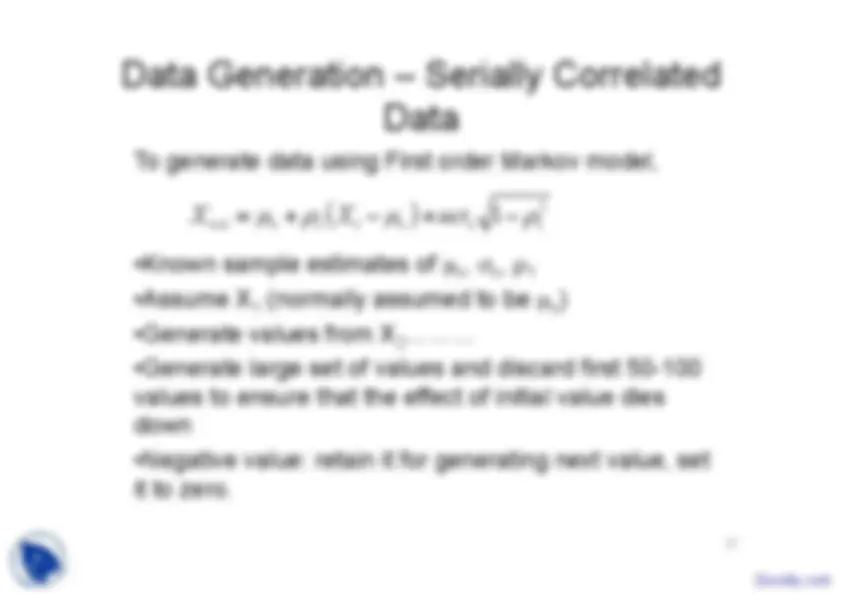
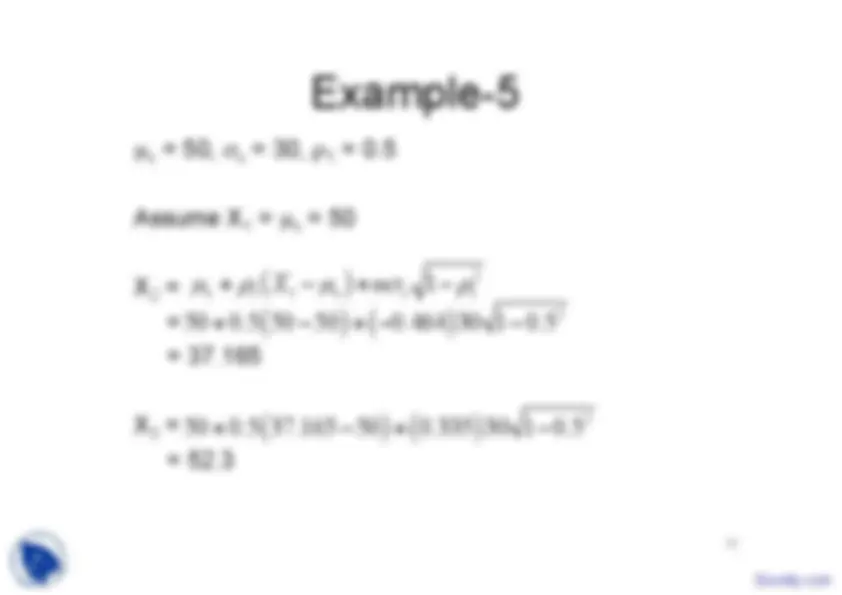
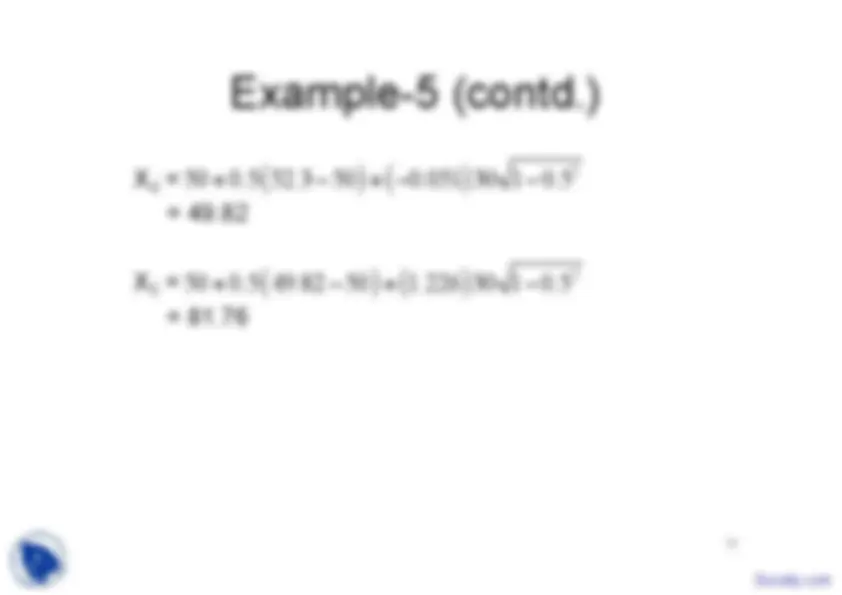


Study with the several resources on Docsity

Earn points by helping other students or get them with a premium plan


Prepare for your exams
Study with the several resources on Docsity

Earn points to download
Earn points by helping other students or get them with a premium plan
Community
Ask the community for help and clear up your study doubts
Discover the best universities in your country according to Docsity users
Free resources
Download our free guides on studying techniques, anxiety management strategies, and thesis advice from Docsity tutors
The main points which I found very interesting are: Time Series Analysis, Sequence of Values, Random Variable, Discrete Time Series, Hydrologic Time Series, Stochastic Components, Continuous Time Series, Time Scale, Probabilistic Behavior, Time Average for Realization
Typology: Study notes
1 / 37

This page cannot be seen from the preview
Don't miss anything!






























time
stochastic components
t
= d t
3
t
x t
Long term mean
4
t
x t
Stochastic + Trend
t
x
t
Stochastic + Periodic
t
x t
Stochastic + Jump
t
x
t
Stochastic
t
= d t
specified time ‘t’
do not change with time.
t
is same as that of X t
v t
6
Time average for a realization
n is no. of observations
Ensemble average at time t
m is no. of realizations
7
1
1
1
n
j
j
X t
n
=
1
m
i
i
t
=
∑
t
t
1
Realization-
t
Realization-
t
2
t
t
m
Realization-m
t 1 t 1 t 1
t
and X t+τ
9
2
0
0
cov ,
cov ,
t t k
t t k
k
X X
t t k k
X
ρ
σ σ
γ
σ γ
ρ
2
0
cov , k t t k
t t k
X
γ
μ μ
γ σ
If process is stationary
t t k
X X
σ σ
stochastic process
10
k
ρ k
Correlogram
n
by γ o
, we get the auto
correlation matrix Ρ n
n
is symmetric and +ve definite matrix
12
1 2 1
1 1 2
2
0
1 2
n
n
n
n
n n
ρ ρ ρ
ρ ρ ρ
ρ
γ
ρ ρ
−
−
− −
n x n
n
is +ve definite
13
1
1
2
1
1
ρ
ρ
ρ
ρ
k
If it is purely stochastic (random) series,
ρ
k
= 0, v k = 1, 2, 3,……..
r
k
= may not be zero (because r k
is a sample estimate)
15
k
k
r k
Correlogram
For a random series
16
k
-z +z
k
r
k
Statistically insignificant
z = 1.
For a random series
18
mean = 1075/
Variance,
x
2
1
0
1 10 1
n
t
t
x x
c
n
=
−
= = =
− −
1
1
1
1
10
n
t t
t
x x x x
c
n
−
=
− −
= = =
1
1
0
c
r
c
= = =
Obtain correlogram for 40 uniformly distributed random
numbers
19
S.No. Data S.No. Data S.No. Data S.No. Data
(^1 98 11 73 21 25 31 )
(^2 69 12 36 22 49 32 )
(^3 30 13 11 23 73 33 )
(^4 50 14 54 24 38 34 )
(^5 93 15 31 25 14 35 )
(^6 1 16 74 26 4 36 )
(^7 66 17 23 27 87 37 )
(^8 99 18 88 28 99 38 )
(^9 76 19 82 29 69 39 )
(^10 65 20 92 30 57 40 )
21
k
r
k
40
40
−
Purely stochastic process
22
N
N
−
Statistically insignificant
k
r
k
k
r k
Periodic process